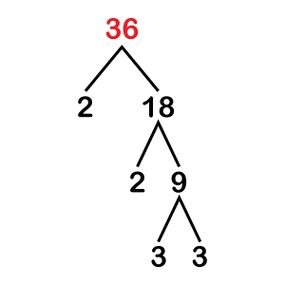Here are some examples that show how all the factors of 36 work:
36 ÷ 1 = 36
In this case, we're working with both the highest and the lowest value factors of 36. So, when we divide 36 by 1, we get 36. This leaves no remainder, and the number we started with: a good way to begin.
36 ÷ 2 = 18
36 divided by 2 is 18. Again, there's no remainder, as 18 is half the value of 36. Conversely, 18 multiplied by 2 is 36.
36 ÷ 3 = 12
36 divided by 3 is 12. Running the equation the other way, we can see that 12 times 3 is 36. As usual, there are no remainders, and thus 3 is the third factor of 36.
36 ÷ 4 = 9
36 divided by 4 is 9. And so of course, 9 times 4 is 36.
36 ÷ 6 = 6
6 times 6 is 36; 36 divided by 6 is (you guessed it!) 6. As always, there are no remainders.
36 ÷ 9 = 4
This might give you a bit of deja vu, and if so, good! As you'll recall from a few equations ago, 4 times 9 is 36. Thus, 36 divided by 4 is 9.
36 ÷ 12 = 3
Once again, we're covering familiar ground. 12 times 3 is 36; 36 divided by 12 is 3.
36 ÷ 18 = 2
If this is seeming repetitive, that's okay. Sometimes math is about repetition, which helps with memorization, and can also help the concept really sink in. We want to be thorough, so we're noting that 18 goes into 36 twice.
36 ÷ 36 = 1
Now we're right back where we began! Any number divided by itself is 1, and so we're including 36 as one of the factors of 36.

